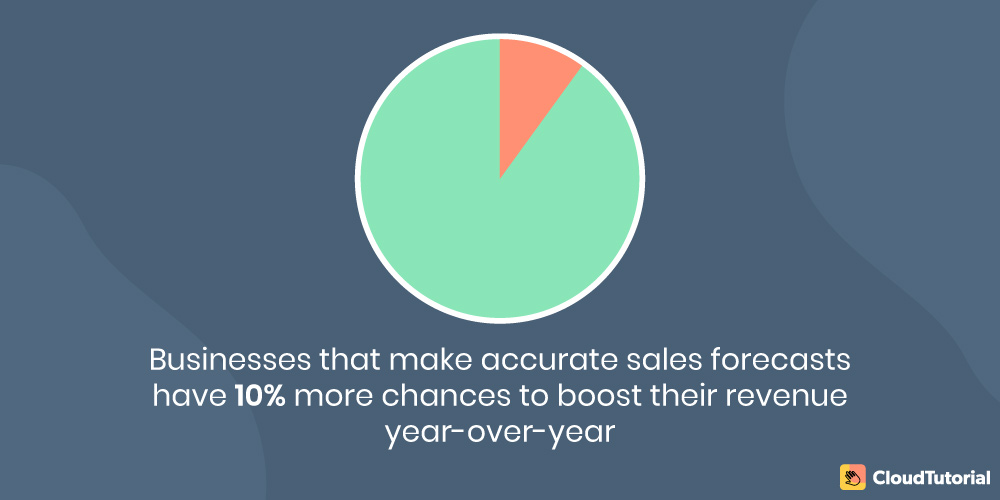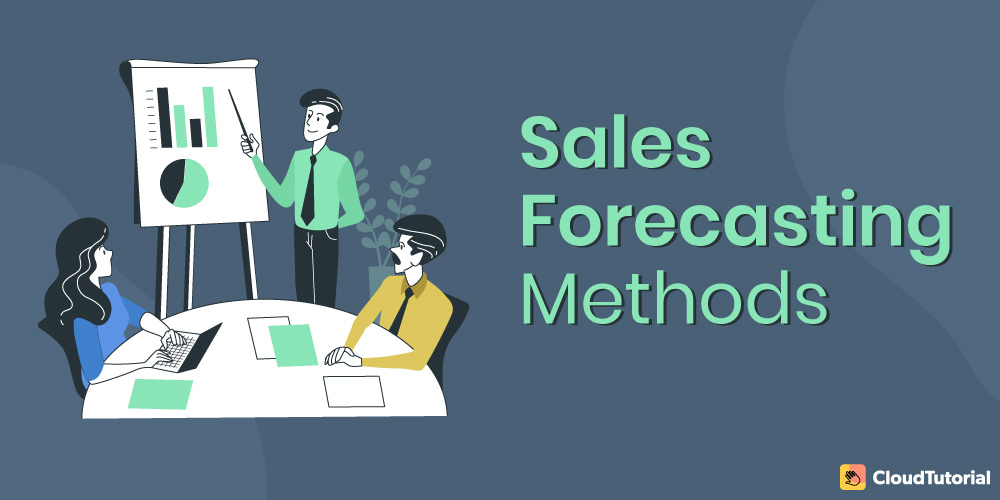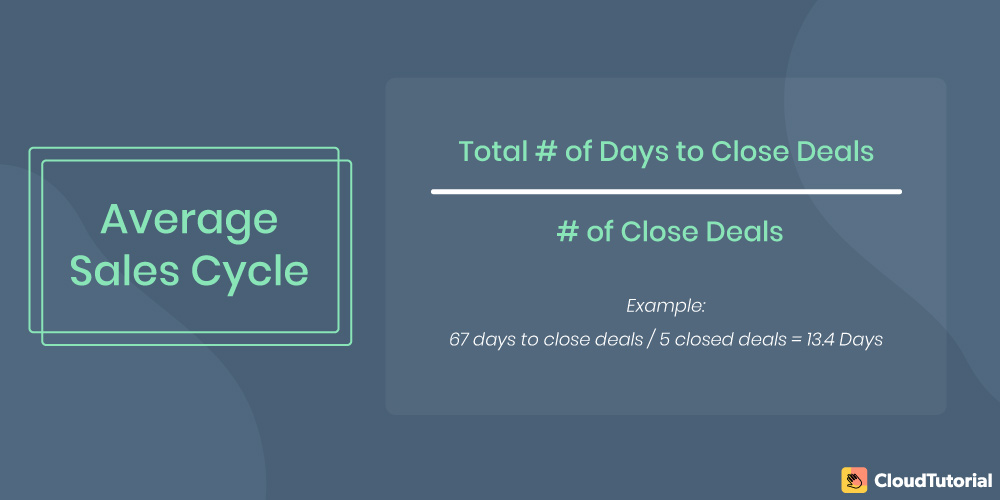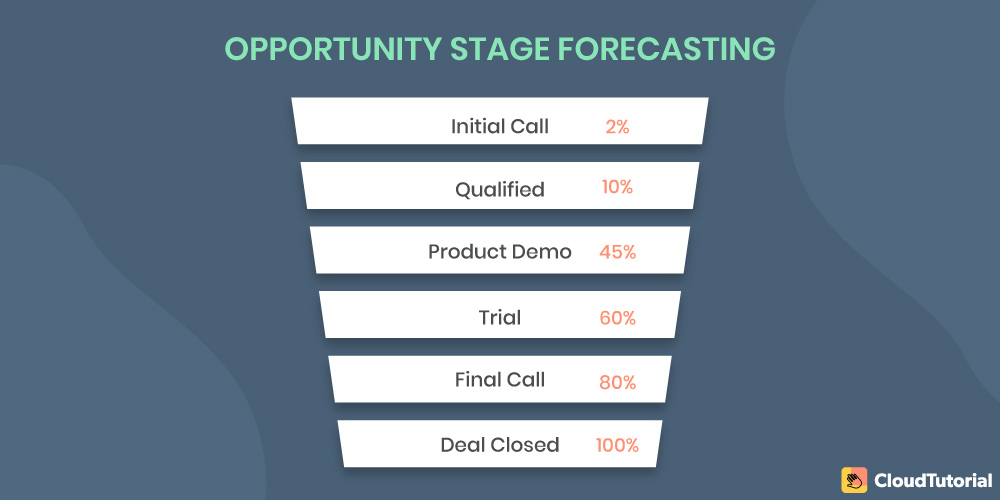How many leads do we need to fulfill our revenue targets in the current quarter?
What should be the revenue target of our business in 2021?
Do we need more people for our sales team to achieve sales goals?
How much revenue will this new product generate?
Sales managers often think of these questions. Sales metrics play an essential part for businesses. So, having an idea of what to expect in the future will help the sales team make better decisions.
But how to make better decisions for future sales? Well, that’s where sales forecasting steps in.
Sales forecasting gives a better idea of how much revenue a business will generate in the given period. It provides the data to help sales managers make crucial decisions to boost revenue.
Although, sales forecasting isn’t easy. Predicting future sales can be difficult due to many factors, and sales forecasts will never be 100% accurate.
In this blog, we will cover all the topics related to sales forecasting methods in detail.
Table of Content
What is Sales Forecasting?
Sales forecasting is the process of estimating the total sales that a company makes in the future period. The period can be monthly, quarterly, half-yearly, or yearly. The process can also track the performance of the sales teams or sales reps.
It will help sales managers identify and bring improvements wherever needed.
Sales forecasts depend on past sales data, economic trends, and industry-wide comparisons. Hence, having historical data will make it easy for a business to make a sales forecast.
New companies without any historical data rely on market research and corporate intelligence for sales forecasting.
Corporate intelligence means gathering, analyzing, and using the data collected on competitors and customers. It is also using other market factors to the company’s advantage.
Why is Sales Forecasting Important?

Research shows businesses that make accurate sales forecasts have 10% more chances to boost their revenue year-over-year.
They have a 7.3% more chance to achieve their targets.
A sales forecast isn’t just for predicting future sales numbers. It also focuses on providing the essential information that helps companies make the right decision in the present. Making the right decisions today will help them in the future.
Here is why sales forecasts are essential for businesses:
Detects Possible Issues: Sales forecasting gives an early warning to possible issues. It will grant companies enough time to solve it beforehand. Let’s say that the sales forecast report shows that your sales team might not achieve their quarterly targets. You investigate and find out that it is due to fewer leads getting generated for them to convert.
You then contact the marketing department and tell them to improve their lead generation strategy to generate more leads. With the issue solved, the sales reps can now achieve their targets before the quarterly period ends.
- Hiring and Resource Management: Sales forecasts can also help a business manage its resources in a better way. Let’s say that it predicts a boost in sales. To fulfill the demand, you allocate a budget to focus more on hiring and getting enough resources. In case, sales forecasts predict a decline in sales. You can then pause on hiring and arranging additional resources and instead focus on getting more deals.
- Improves performance: Having a sales forecast report helps a company decide its goals. It will also provide the information they need to make the right decisions, which will improve the overall results.
Build an advanced knowledge base for your customers and give them answers fast – real fast.
Take your app and help center to the next level with CloudTutorial.
Factors Affecting Sales Forecasting
-
The State of Economy: Companies and markets get affected by the economy’s present condition. If the economy is in depression, people will be losing money and won’t purchase anything from the business. Ultimately it will cause a loss in business too due to fewer sales.
If the economy is strong, people will invest and buy, which will bring more sales for the company. It all depends on the economy.
-
Changes in Policy: Governments often bring new regulations/laws or change their previous policies. It can help or hurt the company. Hence, take all these factors into account when making a sales forecast.
-
Change in Industry: Different companies make similar products. Many factors can affect the market, such as improvements in technology and design, competitors doing promotional campaigns for their products, or new companies entering the market. All these factors can affect your sales forecasts.
-
Changes in Products: A company often makes new changes in its products, and it affects its sales forecasts. Let’s say they introduce a new feature or remove an old one that is no longer useful.
Sales reps can take advantage of product changes to reduce their sales cycle and get more sales.
7 Sales Forecasting Techniques
Here are the 7 sales forecasting methods for your business.
-
Length of Sales Cycle Forecasting
This forecasting method focuses on the data that shows how long it will take for the lead to get converted into a customer. If the average sales cycle continues for four months and the sales rep is working on the prospect for the past two months, it is a 50% chance that they will successfully close the deal.
Lengths of the sales cycle is an excellent forecasting technique because it is entirely objective. It doesn’t depend on other factors, such as sales reps getting guided by their guts or were feeling good about the prospect.
This method can also get applied to other sales cycles depending on the source. A client may take two weeks to respond, while a cold email outreach client might take three months to answer.
Using this method, we can separate such leads based on their source, which will provide an accurate forecast.
This forecasting method is useful for those businesses that want to track how and when leads enter the sales pipeline.
Pros
- Completely objective
- It can get applied to different lead sources for an accurate forecast
Cons
- The sales cycle may differ based on who the company wants to sell. For example, it will be longer for enterprises and shorter for small and medium businesses.
Lead-Driven Forecasting
Lead-driven forecasting analyzes every lead source and assigns a value-based on how similar leads have performed in the past. One can assign a value to every lead source, and it will give you an idea of the likelihood of those leads converting into clients.
For this forecasting method to work, one needs to have data on the following metrics:
- Lead per month from the previous period
- Average price of the sales by its source
- Lead-to-customer conversion rates by its source
Data-driven forecasting can often change. If the marketing team wants to try a different lead generation strategy, it will change the number of leads generated from separate sources.
Eventually, it will also change the lead-to-customer conversion rates. If you want to minimize such results, stay updated on the newest changes and consider them before forecasting.
Pros
- The lead value from each source gives a better forecast accuracy
Cons
- Susceptible to change due to different factors getting involved
Opportunity Stage Forecasting
In this sales forecast, we calculate the chances of a deal successfully closing by observing the prospect’s current position in the sales pipeline. A business can divide its sales pipeline into different stages.
Deals have a successful chance to get finalized if the prospect is further down in the pipeline.
Here are the percentages based on different pipelines:
- Initial call – 2%
- Qualified – 10%
- Product demo – 45%
- Trial – 60%
- Final call – 80%
- Deal closed – 100%
To implement this sales forecasting method, analyze your company’s previous performances. It will give you a better estimation of the success rates at each stage of the pipeline forecasting.
Although it’s a data-driven prediction, this forecasting method isn’t wholly accurate. Opportunity stage forecasting doesn’t consider the individual aspects of every deal, like the lead’s age.
Let’s say a prospect is at the trial stage for the past two months. Their success rate would be the same as the hot lead who entered the trial stage a few weeks ago.
To solve this problem. Mike Brouwer, the VP of Sales at Full Contact, introduced a new methodology for sales forecast.
Pros
- Calculations are simple
- Highly objective technique
Cons
- Inaccurate data can lead to incorrect sales forecasts
- This forecast doesn’t consider the individual characteristics of the deal
Intuitive Forecasting
A sales rep knows well whether the sale will happen or not.
The intuitive sale forecasting method relies upon the trust the business has in its sales team. Sales reps are the ones who are trying for the deal closing, so they will have a better idea of whether it will get finalized or not.
Business leaders can ask their sales team if they are confident about hitting the target.
The problem with this technique is that it is wholly subjective. A sales rep will try to provide better estimates and will act optimistic. The only way for assessment is to observe all the interactions the sales rep has with their clients. But it will be tedious work.
Pros
- A good for new businesses as it doesn’t have any historical data for sales forecasting
Cons
- It’s wholly subjective. Sales reps always try to be optimistic regarding their sales process.
Test-Market Analysis Forecasting
In this forecasting method, a business introduces a new product or service to a section of people based on the market. The product release gets limited by geographical area to observe how well it sells.
The results get used for making an accurate forecast before the product’s final release.
Large companies often like to see how the market response will be to their new product, and startups prefer a soft launch to boost their brand awareness. In such cases, the test-market analysis is an excellent choice.
All markets are different and will react differently. Hence, keep that in mind when using this technique. You will not always get similar results.
Pros
- You will get to see how the market responds to your product. It also allows you to solve any issues detected on the product before the final launch.
- Startups can provide exclusive early access to their product, which will boost their brand awareness.
Cons
- Soft launch or releasing a beta version is costly.
- All markets are different and don’t react in a similar manner.
Multivariable Analysis Forecasting
Sales leaders take different factors from other forecasting methods into account. Forecasting methods such as sales cycle length, the performance of individual sales reps. Even the probability of a deal reaching the opportunity stage.
The multivariable analysis is complicated but has better accuracy than other forecasting methods.
Here is an easy example for better understanding. Two sales reps are trying to close each of their deals in the same account.
Rep A is trying to finalize an 8000$ deal, which has passed the product demo stage. The win rate for the completed demo stage is 60% as per opportunity stage forecasting. So the sales forecast is 4800$ for this deal.
Rep B is trying to finalize a smaller deal for 3000$ and is in the early stage of the sales process. The win rate at this stage is 80%. Hence the sales forecast is 2400$.
The total sales forecast for the entire account is: 4800$ + 2400$ = 7200$
Multivariable analysis needs an advanced analytics solution. Hence it is not suitable for a small business or startup. The sales data needs to be clean. Reps will need to track the deal’s progress at each stage, or else the outcome will be inaccurate despite whatever software you use.
Pros
- Produces accurate results due to being a highly data-driven method.
- Analytical tools will do all the calculations and show the forecast results. Reps won’t have to burden themselves with the entire process.
Cons
- Advanced analytical tools can be expensive for newly founded startups or small businesses.
- Incorrect data can give an inaccurate sales forecast.
Historical Forecasting
In historical forecasting, one can take the previous data from the past and assume that their current sales will be equal or greater than that.
Here is an example. Let’s say that your monthly recurring revenue (MRR) in May was 50,000$. With historical forecasting, you assume that for June, the MRR will be 50,000$ at least. One can also add their average year-on-year growth rate, like 10%, and MRR for June will be 50,500$.
Historical forecasting isn’t without its flaws. It doesn’t take into account the fact that the market always keeps changing. For example, what if a competitor runs a promotional campaign for their product in June?
A business may see a decline in its sales due to that reason. It could end up selling less than 50,000$.
Historical forecasting is an easy and quick way to forecast. Use it as a benchmark rather than as the foundation for your sales forecast.
Pros
- Easy and quick to forecast.
- Historical forecasting can be very accurate if the market is not susceptible to changes.
Cons
- It doesn’t take market changes into consideration.
- It doesn’t take market changes into consideration.
Build an advanced knowledge base for your customers and give them answers fast – real fast.
Take your app and help center to the next level with CloudTutorial.
How to Get Started with Sales Forecasts?
These four steps will enable your business to make sales forecasting as accurate as possible.
- Establish a Sales Process for the Team
The sales process for the entire team should be similar. That’s how you can predict the chance of a deal getting finalized. Take a look at CloudTutorial’s guide on how to give an outstanding sales presentation. It will help your team convert leads to customers without any hassle.
-
Set Team and Individual Quotas
To measure the performances of your team or individual, you need to create a definition of success. That’s where sales quotas step in.
It can serve as goals that the team or individual needs to achieve for a successful quarter.
-
Invest in a CRM Software
CRMs, like CloudTutorial, come with a database to track opportunities. The predictions from CloudTutorial are very accurate.
Accurate data leads to reliable forecasting.
Encouraging your team to use CRM will be beneficial for your business and future forecasting.
Visit CloudTutorial’s 15 powerful CRM reports to learn about CRMs in detail.
-
Decide a Sales Forecasting Methods
After selecting the sales process, the sales quota, and CRM. It’s time to decide which sales forecasting methods to use.
Choosing which methods will benefit your business depends on various factors. The age of your business, the size of your team, and sales pipelines are such factors. The quality of your data points from which you create forecast and data tracking habits also plays a vital role.
- If the business is new or doesn’t have historical sales data, go for intuitive forecasting.
- If you want detailed pipeline-specific forecasting, then the multivariable analysis is your best bet.
- Opportunity sales and length of sales are useful in making objective calculations for sales forecasts.
- Historical forecasting works well if the market is consistent.
Keep your business model, data tracking habits, the sales team in mind before deciding which sales forecasting methods to choose.
FAQs
Customer conversion rate is the percentage of customers who are taking the desired action. In online marketing, it means the percentage of website visitors that perform a specific action on the website.The revenue forecast is an estimation of your revenues over a fixed period. The period can be anything but is mostly limited to a quarter or year.CRM stands for customer relationship management. It is for managing interactions with customers. CRM helps a business build better customer relations and streamline processes for better sales, improved customer service, and a boost in profits.A sales pipeline refers to every step in your sales process that a sales rep takes to finalize the deal successfully.
Conclusion
Sales Forecasting reports will help you plan your sales strategy. It needs to be data-driven for an accurate forecast.
Data-driven sales forecasting will give your business better control over its operations, help it avoid pitfalls, and achieve its intended targets.
We, at CloudTutorial, can provide you with accurate data for your sales team. Our data-driven sales forecast will help you achieve your targets successfully. We are committed to improving the growth rate of your business. Visit our website and schedule an appointment today.
Try it out before you decide.
Create a test article NOW!
Using this tool, all you have to do is add your first test article and see how it looks. Now, you don’t have to sign-up or login into CloudTutorial software just to check how your first article appears.
Ready To Try Our Knowledge Base Software?Go with CloudTutorial or waste 100’s of $$$ on clunky tools with features that you don’t even use



